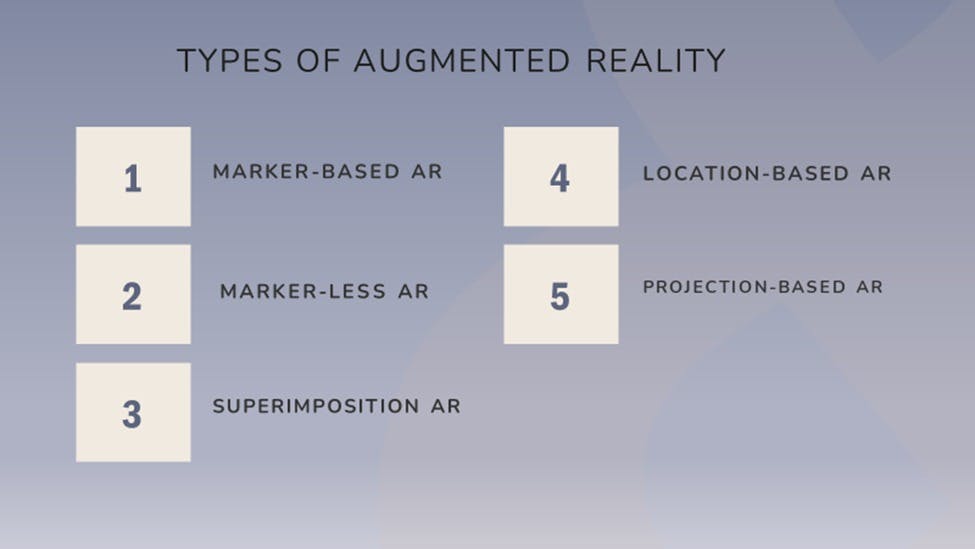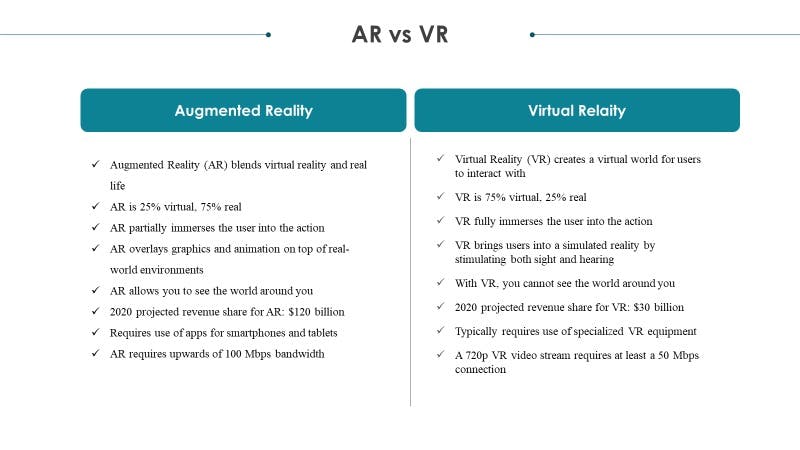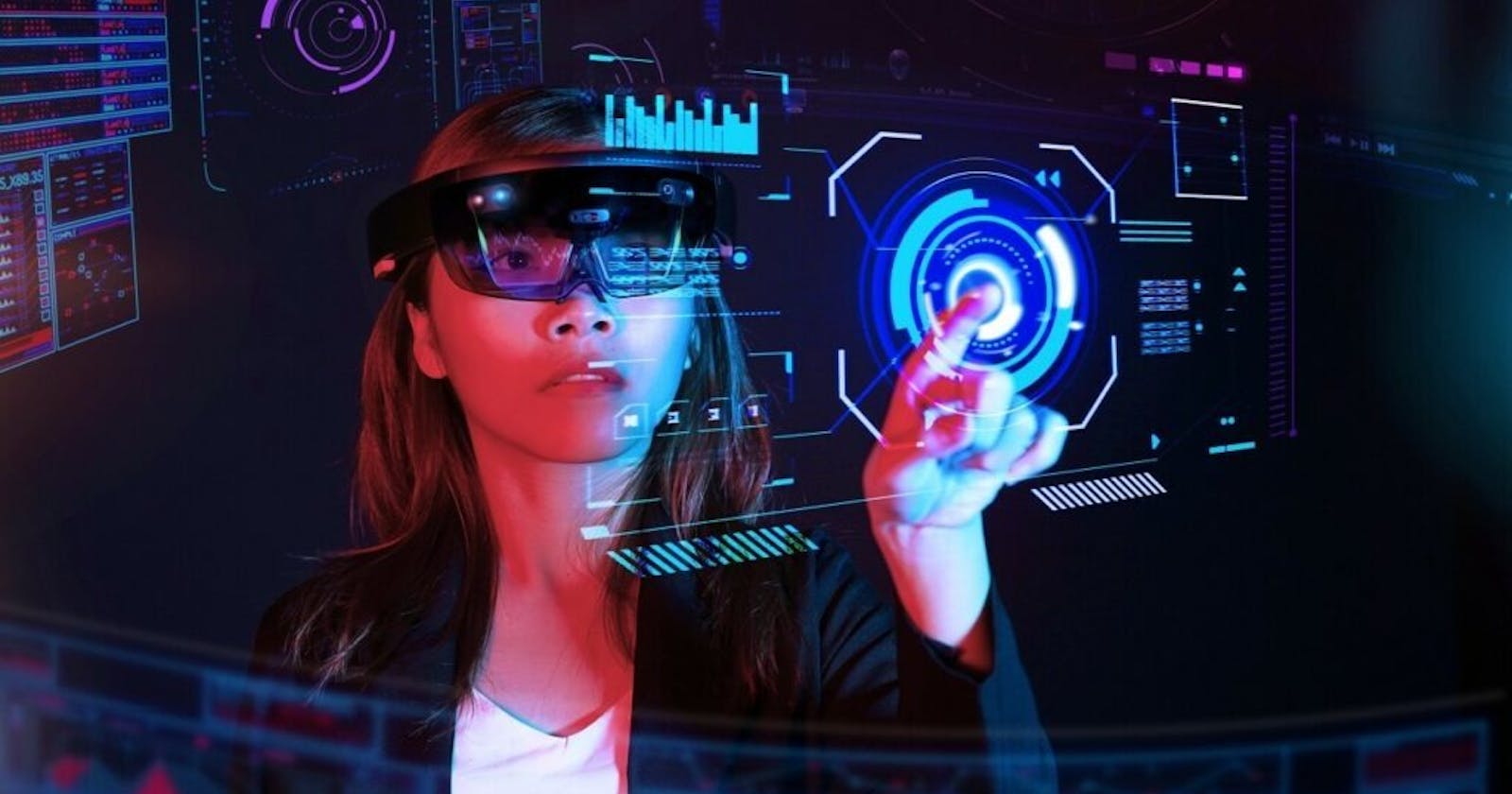Are you unfamiliar with the terminology Augmented Reality? What is the difference between VR headsets and head-mounted displays? What is the distinction between augmented reality(AR) and virtual reality(VR)? What are the implications of all these technology transformations? When are you going to connect?... Don't worry; just breathe and stay cool; we are here to assist to sort the things out.
With such a wide market to engage in, offering augmented reality experiences can be a strategic edge in a variety of businesses. The advancement of technology will also lead to enhanced working efficiency. Let's explore what is considered to be AR and how it will boost productivity in 2022.
INTRODUCTION
So you've read about AR/VR/MR and want to learn a little more about it. For a huge number of individuals, it remains an abstract and exotic technology, resembling sci-fi from Hollywood films. Create holograms, interactive displays, and virtual 3D creations that can be animated. All of these services, in fact, currently existed.
Today is the period of computer-enriched, tech-enhanced lives. People want more than just to survive in the external reality; they want the deeper sensations that technological advancement allows them to have. One of these breakthroughs is augmented reality (AR), a technique that enables individuals to dance with superstars, travel to faraway places, visit other galaxies, and even journey back in time – all from the comfort of their own homes.
Augmented Reality (AR) is a technology that adds computerized features to your device's camera, giving the impression that holographic stuff is a physical entity. You are not engulfed in a synthetic environment, unlike virtual reality (VR). AR modifies realism by incorporating 3-D objects, audio, movies, and images. Augmented reality is a technology that overlays digital content such as sound, pictures, and texts on top of your realistic idea.
It allows you to visually search for things by focusing your camera on them. By stacking visual, immersive content on the pinnacle of your physical world, it may place correct answers where your queries are.
Consider Snapchat's lenses, which allow you to take dog-eared pictures or switch heads with your BFF with the swipe of a fingertip.
AR, on the other hand, maybe used beautifully in mobile marketing to increase engagement by providing realistic, virtual encounters with items.
You may virtually test on spectacles or view how new household appliances will look in your workplace using augmented reality.
The AR market is rapidly expanding. Analysts predict that by 2030, the enterprise as a whole would be worth more than $76 billion, up from $26.75 billion in 2021. It will be fascinating to see what advancements emerge over that period, as well as how much smoother our lives may be made with AR technology.
There are 5 types of augmented reality currently in use. There are numerous corporate categories in the investigation phase of adopting this innovative technology, ranging from retailing to gaming.

Now, let's discuss how it works!
HOW DOES AUGMENTED REALITY WORK?
Amid the COVID-19 outbreak, which forced many organizations to adopt work-from-home policies, then augmented reality may become a portion of the typical office area. Many people threw up their hands when Facebook announced its virtual reality workplace software Horizon Workrooms earlier this year. This AR innovation use, on the other hand, might allow people to stay linked as if they were sitting in the same room without having to leave their homes. Without even being present, an AR meeting may show participants in a venue as holographic projections, movies, or even characters.
Let's use the soccer game as an example. The program identifies a person's foot by placing a virtual imprint on the actual foot and tracking its motion, allowing the user to kick a virtual soccer ball down the lane on the screen while keeping track of their scores. The user's foot may be recognized using the object recognition feature, allowing the computer to recognize each player and propose a fresh game towards another user.
AR can be viewed on a variety of devices, including screens, glasses, handheld devices, cell phones, and helmet displays. It includes S.L.A.M. (simultaneous localization and mapping), depth tracking (basically, sensor data that calculates the proximity to objects), and the accompanying components:
- Sensors and Cameras
- Projection
- Processing
- Reflection
From androids and tablets to gadgets like Google Lens technology trends are constantly evolving at a tremendous rate. For analysis and projections, AR Gadgets and hardware must contain sensors, cameras, accelerometers, gyroscopes, digital compass, GPS, CPUs, displays, and other features.

Applications Of AR
When AR made its way into the business world and into many industries, its usage skyrocketed. AR is being used in a variety of industries, including gaming, healthcare, automotive, media, and education.
- AR in Education
- AR in Gaming
- AR in Healthcare
- AR in Navigation
- AR in Sports
Some real-time applications or uses of AR include Snapchat, Hololens, Google Glass, Google ARCore, AcrossAir, Google Sky Map, Layar, Lookator, SpotCrime, PokemonGo, etc.
Applications like IKEA Place enable the customers to see how a couch or lamp might appear in their house before purchasing it.
The Future of Augmented Reality
Although augmented reality is thought to be a futuristic technology, it is already here. We should anticipate AR to progress swiftly, bringing brand-new applications to people all around the world, as technology advances at an unparalleled rate. So, what does the future looks promising for those who employ augmented reality?
Researchers also anticipate that the growth of 5G networks would make cloud-based AR applications easier to sustain while also improving their realism. 5G networks' high-speed, low-latency connectivity will make it possible to extract programs and connections from all over the world in a nanosecond.
AR has shown to be a strong tool for business and the broader population, from offering interactive weather updates to assisting fighter pilots in finding their targets at all hours of the day and night.
The potential for employing AR is numerous, from improving images in low light to smart farming to aiding in counter-terrorism. All of this, however, will be impossible without modern technical advances. Over the next decade, technologies like edge computing, 5G, AI, and machine learning will transform the AR experience.
2021 will likely be remembered as the year that both marketers and users began to pay critical consideration to augmented reality and the opportunities it offers. With more companies engaged in AR than ever before, and a rising number of consumers aware of AR beyond filters, staying up to date on the shifting environment and current developments in the field is now essential for anybody trying to plan and safeguard their business for the future.
CONCLUSION
As you've seen, augmented reality is a fascinating field of technology that may provide improved visual experiences while also transforming the way people study, navigate, get medical treatment, and communicate. AR devices are getting increasingly advanced, consumer-friendly, and portable, bringing Immersive experiences to everyday consumers and allowing them to have fun, learn new things, go to faraway places, and meet people from all over the world in one room.
The year 2022 is only the outset for this fascinating and fast-paced sector. AR/VR (along with mixed reality or MR) is anticipated to become a $300 billion market by 2024. The themes we've discussed are only the tip of the iceberg in terms of how AR/VR might be utilized to enhance our lives, boost safety, reduce risk, improve the quality of education, and even have fun.

